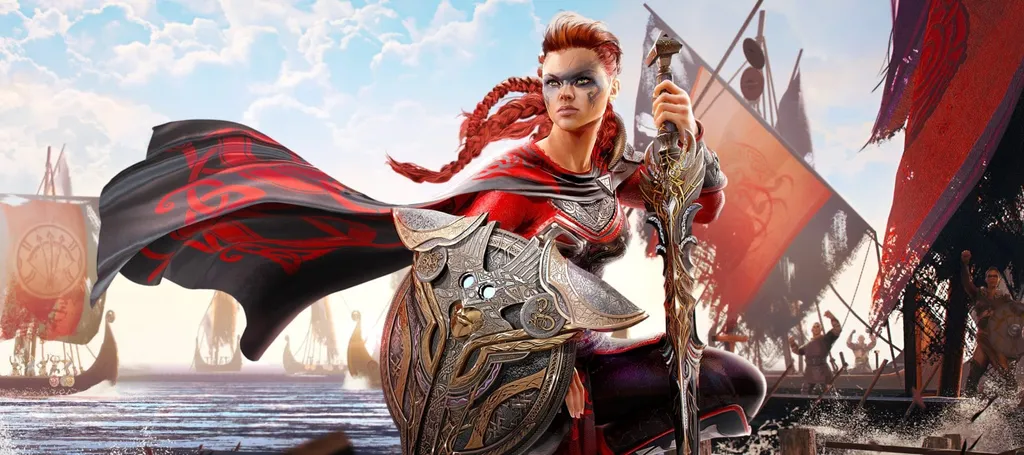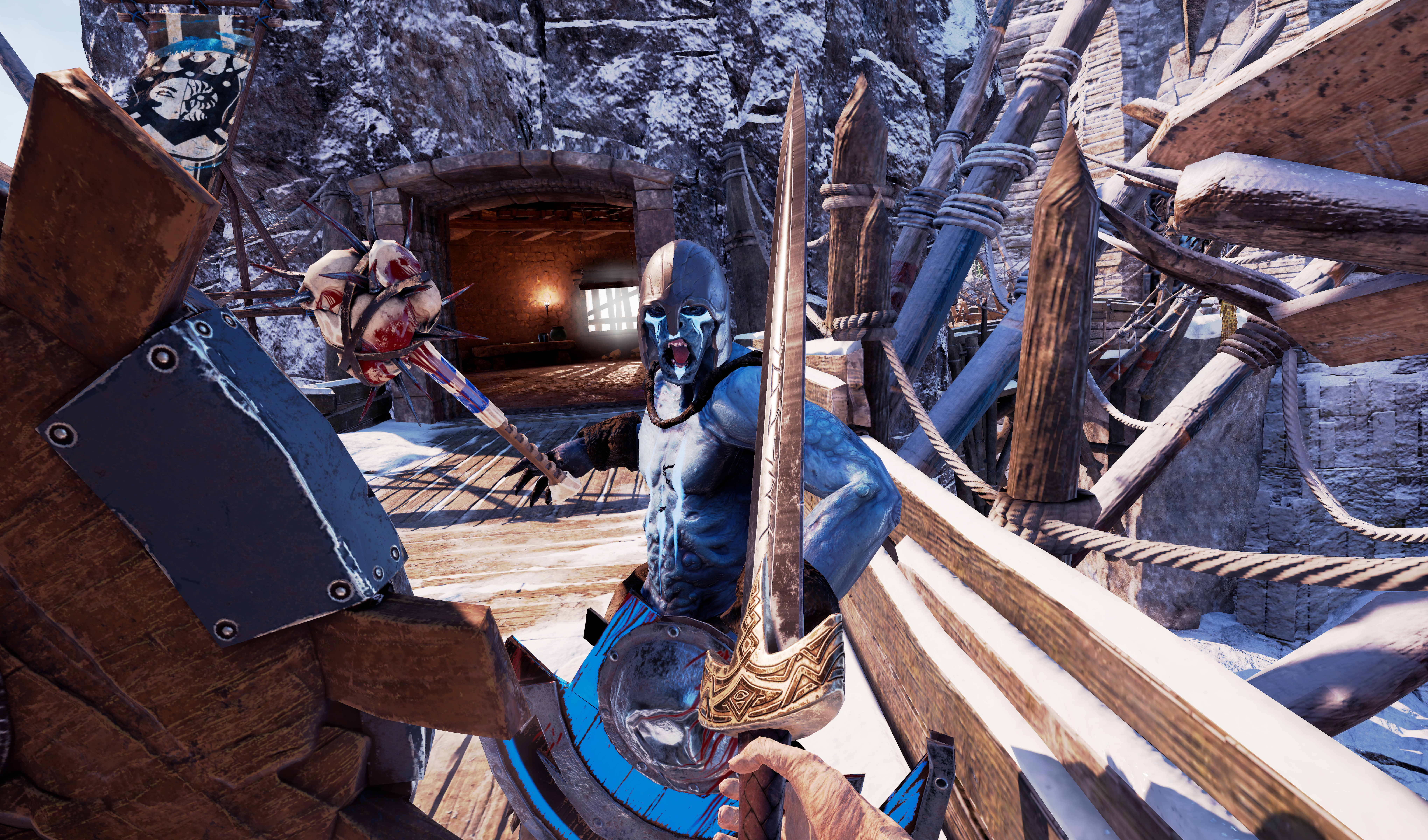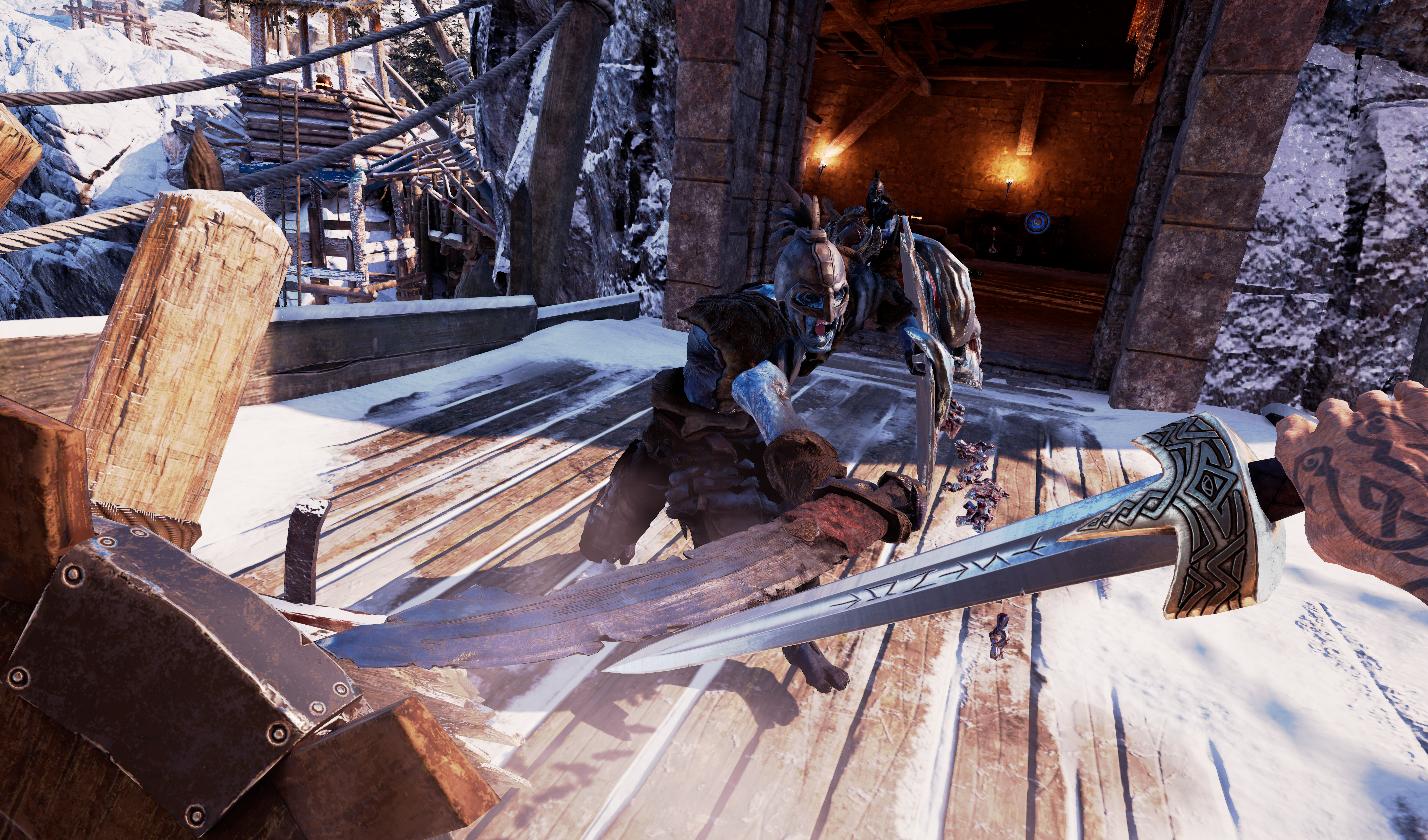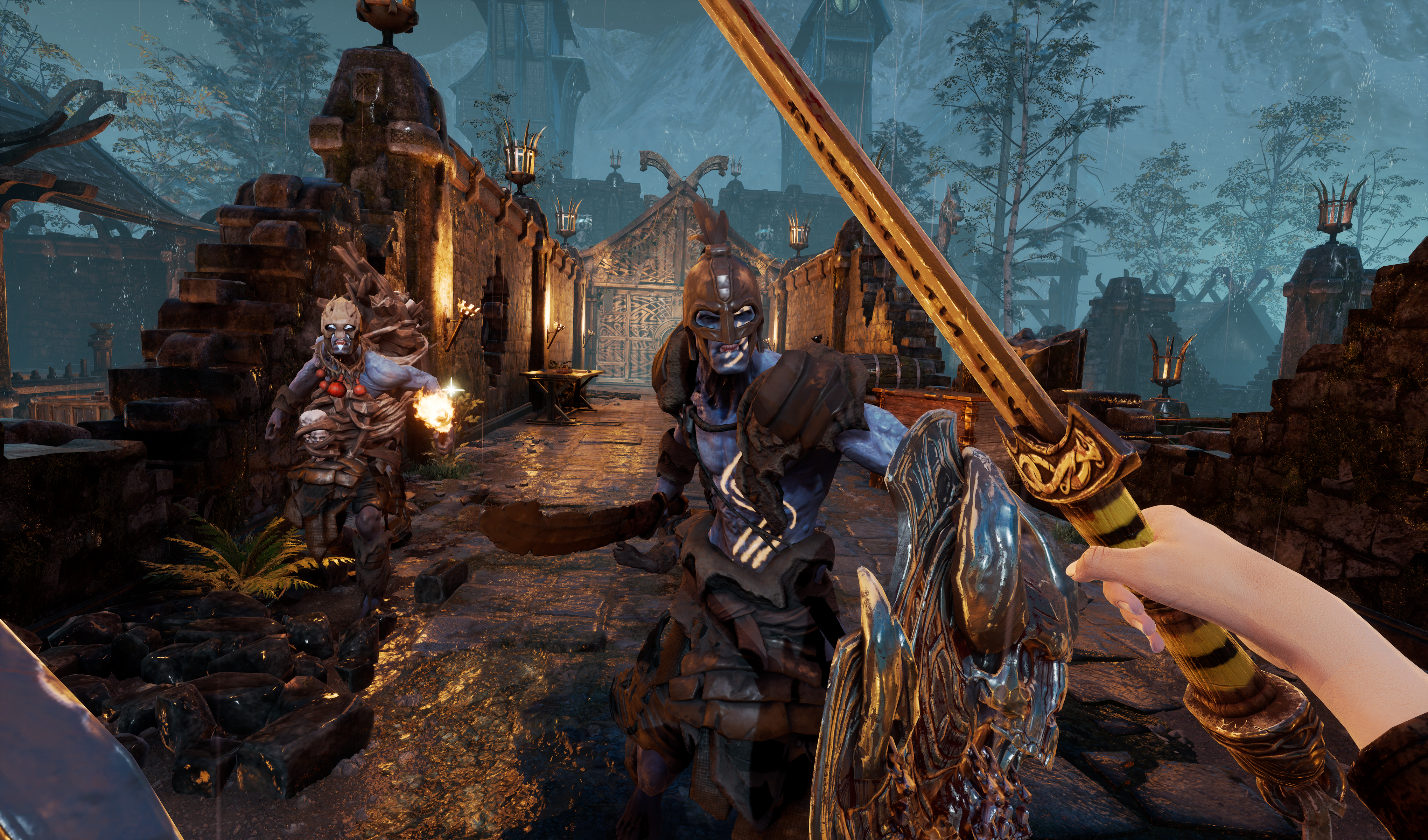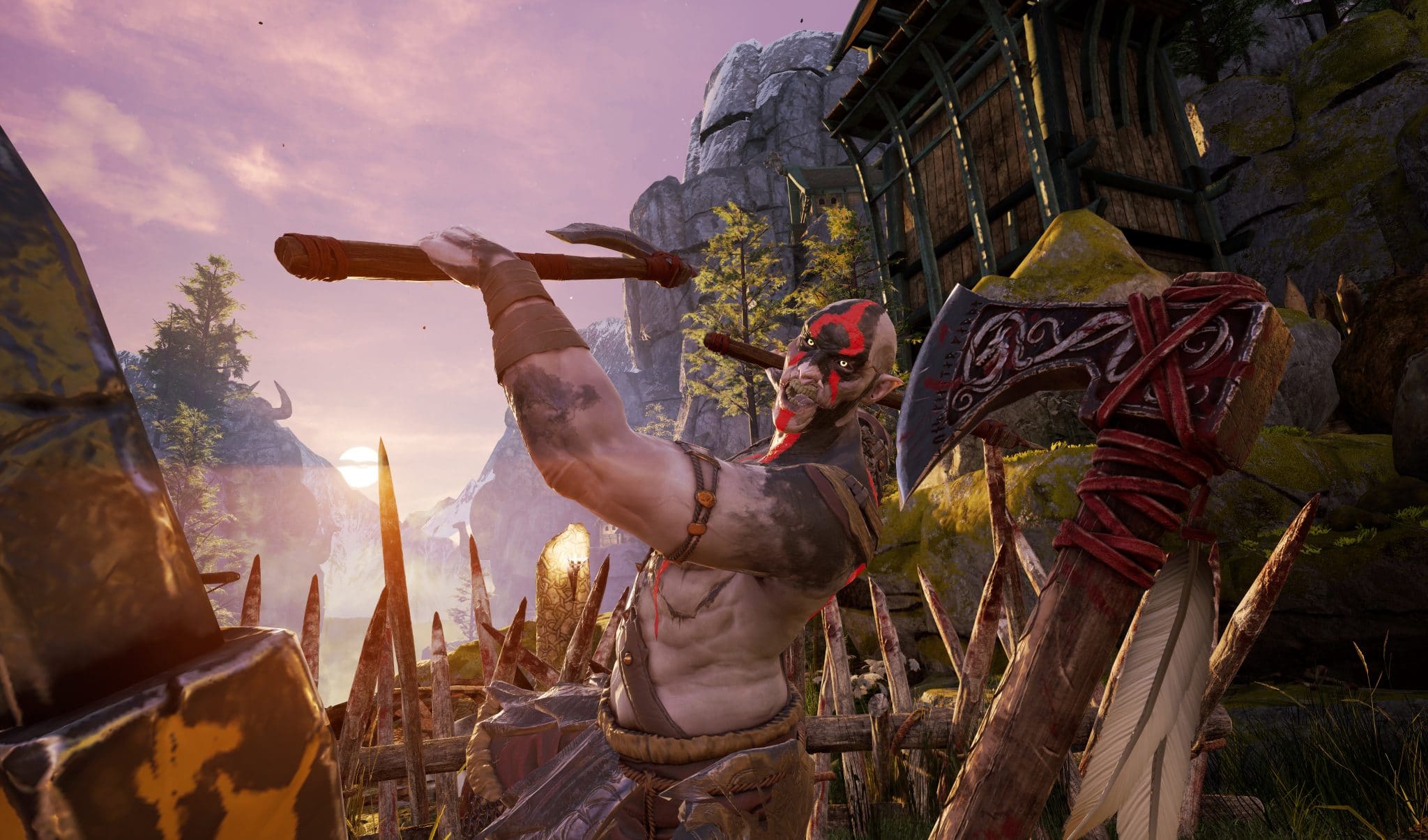It’s already been an entire year since Asgard’s Wrath first released exclusively on the Oculus Rift and won our Best VR Game of the Year award for 2019. We dove back into Sanzaru Games’ action RPG epic and were delighted to find that it remains just as impressive as we remember.
Asgard’s Wrath: Still Impressive One Year Later
A lot has happened since Asgard’s Wrath first released, including the announcement and impending release of the Quest 2 as well as revelation that Facebook will start selling its first Oculus Studios first-party game on Steam soon. VR is a very different landscape now. Back when Asgard’s Wrath came out, it was the big title to prove VR could be more than tech demos and two-hour walk-around-and-read stuff adventures. Now, games like Boneworks, The Walking Dead: Saints & Sinners, and Half-Life: Alyx have continued to carry that torch.
I still really, really like Asgard’s Wrath. For more specifics on why you can obviously read my full, lengthy review or watch the video version above, but to put it simply it’s the kind of VR game I’d always wanted. Growing up I was raised on The Legend of Zelda, Lord of the Rings movies, and a fascination with mythology and medieval swordsmanship. In many ways, Asgard’s Wrath is the culmination of all those things into a single, neatly crafted package.
That being said, it would be easy to nitpick and criticize individual elements from Asgard’s Wrath, but it’s much more than just the sum of its parts. Yes, combat relies on pre-made enemy animations heavily rather than the physics-driven combat sandbox of Blade & Sorcery. No, it’s not a true open world that lets you go anywhere or do anything. But within the confines of what it tries to be — essentially, a VR Zelda game complete with epic boss fights, a litany of items and gear, and head-scratching puzzles to mix things up — it knocks it out of the park.
If we take a look at all of the VR RPGs on the market, both those that released before and after Asgard’s Wrath, you’ll see there is still nothing that really compares.
Watch my interview with the Creative Director on the game, Mat Kraemer, right here:
The Elder Scrolls V: Skyrim VR is perhaps the closest comparison, but you’d need to mod the hell out of it to get something that feels like a made-for-VR game and even then it’s still nine-years old. I love The Elder Scrolls as much as anyone and it’s a remarkable open-world RPG, but it doesn’t deliver the same narrative impact with a well-paced adventure through a series of dungeons. Asgard’s Wrath borrows its design more liberally from Zelda than anywhere else, as mentioned before.
Journey of the Gods isn’t bad, but the simplistic art style and much smaller scope (mostly linear levels without real dungeons totaling around 10 hours vs. 30+ hours) puts it in a different ballpark. The Wizards is a fun mage adventure, Vanishing Realms does a good job with what it’s got going for it, but is over pretty soon as well.
To put things into perspective: I don’t think there are many other VR games on the market, even a year later, that offer the amount and variety of content that Asgard’s Wrath does that isn’t procedurally generated. These are hand-crafted assets with full voice acting and wonderful world-building.
Visually, I don’t think Asgard’s Wrath has been topped in my opinion. Half-Life: Alyx nails the decrepit sci-fi dystopia without issue, but Asgard’s Wrath has it beat in terms of scale and variety. Gazing out at the snow-capped mountains of Helheim before facing off against Hela herself, pausing on the edge of a cliff to admire the ocean, or seeing intricate, ornate structures as tall as the eye can see in Asgard is all magnificent.
I’m still holding out hope for a full-on sequel of some kind after the cliffhanger ending we got at the conclusion of the story, or at least some kind of DLC to keep things going, so hopefully an announcement of some kind isn’t too far off. Now that Facebook owns Sanzaru Games you can guarantee they’re hard at work on whatever is next in VR.
Asgard’s Wrath clocks in at around 130GB on PC, so a Quest port seems unlikely, but maybe a spin-off of some kind could work. That being said, I’ve played it on the Oculus Quest 2 using Virtual Desktop and with Oculus Link and it plays great on both. The Quest 2’s sharp screen and 90Hz refresh rate in Virtual Desktop looks excellent if you’ve got a beefy enough PC and strong WiFi network.
However, you really need to have ultra-precise reaction times here and any latency, such as over wireless Virtual Desktop streaming, can make combat difficult at times. I’ll also say that this is not the best game to put down for a full year and then suddenly pick up again. It’s very complex with a wide range of companion characters, weapons, and features that I honestly spent a solid 20 minutes just trying to jog up the muscle memory. It’s a doozy — but it’s so worth it. And if you’re playing for the first time then no worries.
Here’s to hoping I can eventually play something else that will make me feel excited to binge a ~30 hour RPG fully in VR. Until then, I can always return to Asgard’s Wrath.
For more on Asgard’s Wrath, check out our full review, list of tips for getting started, companions guide, and Midgard sidequest guide. You can buy the game on the Oculus Rift store for $39.99 (yes, it works with Oculus Link on Quest or via Virtual Desktop on Quest, as well as ReVive for other PC VR headsets).

